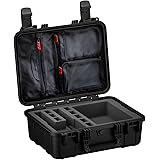Navigating the frozen wilderness presents a unique set of challenges, demanding expert-level bushcraft and an unwavering resolve. The accompanying video offers a compelling visual narrative of a two-day adventure in extreme cold, demonstrating crucial extreme cold survival techniques in a -19°C environment. This isn’t merely about enduring the elements; it’s about proactively shaping your immediate microclimate and leveraging natural resources to ensure safety and sustenance. Understanding the scientific principles behind these survival methods is paramount for anyone venturing into sub-zero conditions, transforming mere camping into a strategic exercise in resilience and self-reliance.
The physiological toll of extreme cold on the human body necessitates a comprehensive understanding of thermal regulation. At -19°C, the risk of hypothermia is significant, with studies indicating that unprotected exposure can lead to severe core temperature drops within hours, depending on factors like wind chill and individual metabolic rates. Effective cold weather camping, therefore, hinges on mastering key skills such as efficient shelter construction, reliable fire craft, and intelligent resource acquisition. This demands a nuanced approach, moving beyond basic principles to embrace advanced wilderness skills that directly combat the profound challenges of sub-zero conditions.
Engineering Thermal Envelopes: Advanced Shelter Construction in Sub-Zero Conditions
The construction of an adequate shelter is perhaps the single most critical factor in extreme cold survival. As demonstrated in the video, a well-built debris hut or lean-to, properly insulated with natural materials, creates a vital thermal envelope. This structure functions by trapping a layer of still air, which acts as an insulator, significantly reducing convective and radiative heat loss from the body. The choice of site, often dictated by natural windbreaks or depressions, further contributes to minimizing exposure and maximizing the shelter’s efficacy against biting winds and heavy snowfall, which can dramatically increase perceived temperatures.
For optimal thermal performance, the shelter’s design must prioritize compactness to reduce the volume of air needing to be heated by body warmth or an internal fire. The video illustrates the use of fallen trees and leafy branches, highlighting an important ecological principle of utilizing deadfall, a practice central to sustainable bushcraft. Effective insulation material should be dry and voluminous, such as dried leaves, pine needles, or moss, piled to a minimum depth of several feet on all sides, including the floor. This creates an insulative barrier that can raise the internal temperature of a well-built snow shelter by 15-20°C above ambient, a critical margin for preventing hypothermia in a -19°C environment.
Mastering Fire Craft in Arctic Environments: Ignition and Sustenance
In conditions of extreme cold, fire transcends its role as a mere comfort; it becomes a multi-functional survival tool, essential for warmth, water purification, cooking, signaling, and morale. The video effectively showcases the disciplined process of fire starting, beginning with meticulous preparation of tinder, kindling, and fuel wood. Success in sub-zero environments often hinges on the quality of tinder, which must be absolutely dry and highly combustible, such as birch bark, dead grasses, or finely scraped wood fibers. A ferro rod and striker, as seen in the demonstration, provide a reliable spark, crucial when matches or lighters might fail due to dampness or cold.
Building a sustained fire in deep snow requires specific techniques to prevent it from melting down into the snowpack. A raised platform, constructed from green logs or flat stones, provides a stable base, allowing the fire to radiate heat effectively without consuming itself from below. The gradual addition of progressively larger fuel wood, from pencil-thin kindling to substantial logs, ensures a consistent and enduring heat source. Efficient fire management, including the strategic placement of logs for a slow burn overnight, can significantly conserve energy and maintain critical warmth, proving indispensable for winter survival in challenging conditions.
Strategic Resource Acquisition: Water and Fuel in a Frozen World
The frozen wilderness, while seemingly abundant, presents significant challenges for resource acquisition, particularly for water and fuel. As the video highlights, melting snow becomes the primary method for obtaining potable water when natural liquid sources are unavailable or frozen. However, directly consuming snow or ice is highly inefficient and metabolically taxing, as the body expends considerable energy to warm the ingested material to core temperature, potentially leading to dehydration and an increased risk of hypothermia. Therefore, melting snow over a fire is the preferred and safest method, yielding far more usable water per unit of effort.
Fuel wood acquisition in extreme cold survival scenarios demands both effort and knowledge. The video demonstrates the critical practice of using only fallen trees and branches, adhering to ethical bushcraft principles. In snowy conditions, standing deadwood or “widowmakers” can be a valuable source, as they often remain drier than ground-level fallen timber. Processing wood with tools like a saw and axe, as shown, is vital for creating manageable sizes that burn efficiently and fit within the fire lay. Understanding the calorific value and burn characteristics of different tree species – for example, hardwoods burning longer and hotter than softwoods – further refines fuel management strategies.
Wilderness Provisions: Nutrition and Ethical Foraging in Winter
Sustaining caloric intake is vital when exposed to extreme cold, as the body burns significantly more energy to maintain core temperature. The traditional Caspian meal of sheep liver and dumblyan, as featured in the video, illustrates the importance of high-energy, nutrient-dense foods in a survival context. Organ meats like liver are rich in vitamins, minerals, and healthy fats, providing essential sustenance. Dumblyan, often a dough-based dish, contributes vital carbohydrates for sustained energy release. Such traditional meals are not merely culinary preferences but are often born from generations of practical experience in calorie-demanding environments.
The brief demonstration of setting a trap for a Caspian pheasant, strictly for educational purposes and followed by the bird’s release, underscores the ethical considerations inherent in wilderness skills. While hunting and trapping can be a critical food source in long-term survival scenarios, it requires a deep understanding of local wildlife, regulations, and humane practices. Winter foraging for plant-based foods is significantly more challenging due to snow cover, emphasizing the reliance on stored provisions or animal protein in extreme cold environments. Proper preparation and cooking over an open fire, as shown, not only make food palatable but also render it safer for consumption.
Ultimately, proficiency in extreme cold survival is a testament to rigorous preparation, continuous learning, and an unyielding respect for the wilderness. The skills showcased, from constructing a robust shelter to efficiently managing fire and ethically sourcing food, form the bedrock of competence in sub-zero conditions. Mastery of these techniques, coupled with a resilient mindset, transforms a potentially perilous environment into a manageable, albeit challenging, endeavor, ensuring safety and fostering a deeper connection with the wild. It is a commitment to outdoor preparedness that can mean the difference between thriving and merely enduring in the face of nature’s formidable embrace.











